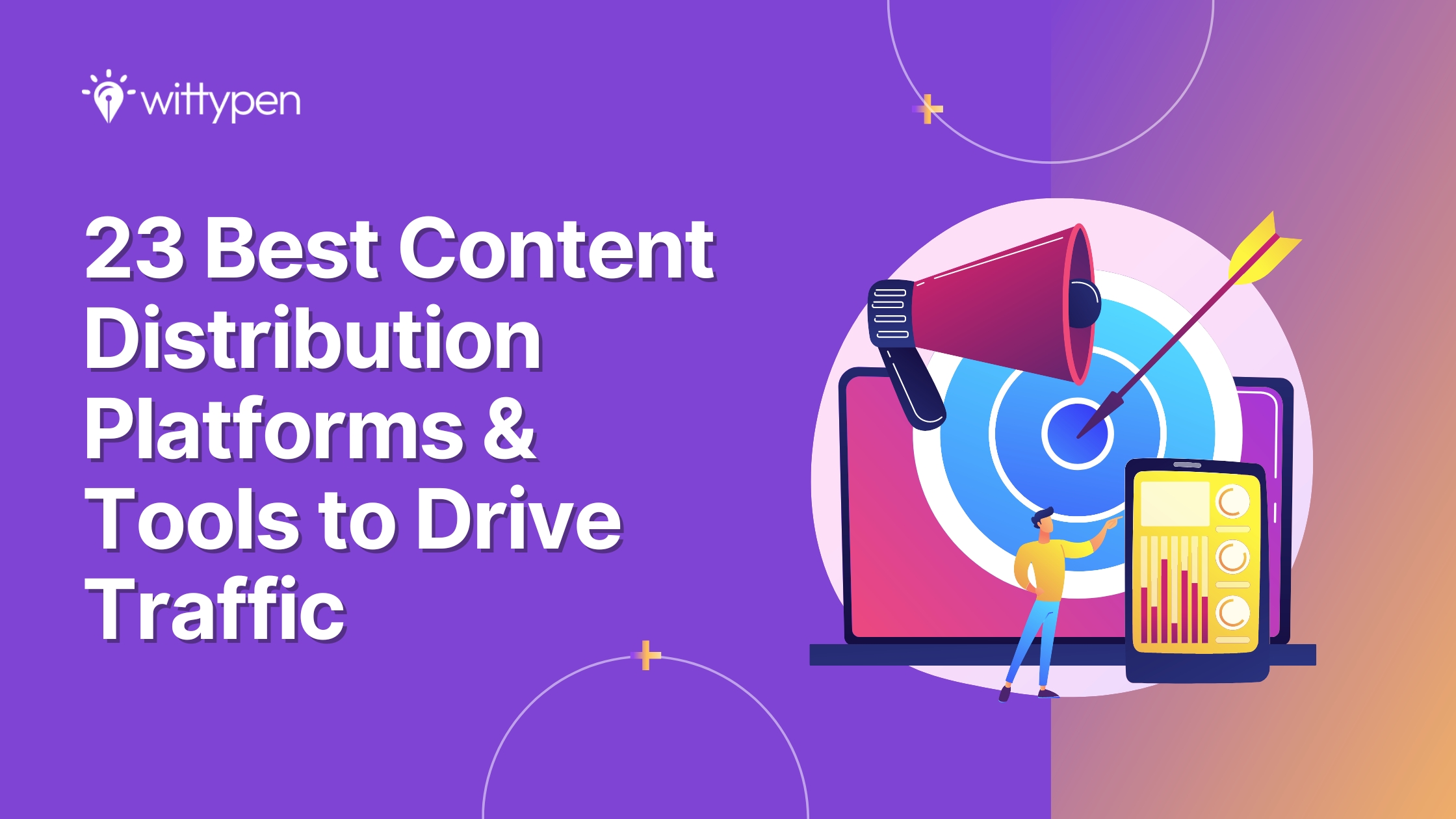Last updated on December 15th, 2023
Table of Contents
Are you trying your luck with B2B marketing strategies that just aren’t hitting the mark? You’re not alone.
Many businesses hit a wall, signaling it’s time to explore the current trends and customer buying patterns. This shift in perspective could be the jolt your strategy needs.
In this guide, we list more than 45 of the most important B2B marketing stats that can redefine your approach and elevate your business in 2024. No matter if you’re a seasoned marketer or just starting out, these stats provide actionable insights to elevate your business to new heights.
Let’s get exploring!
Most Important B2B Marketing Statistics to Check Out in 2024
In this section, we will explore some of the most important B2B marketing stats across the various aspects of the industry. These will help you effectively shape your marketing strategy, keeping the bigger picture in mind.
Read on!

1. 56% of B2B companies based in the US carry out their marketing efforts using an in-house team. On the other hand, 6% of businesses outsource their marketing efforts, while 38% use a combination of the two approaches.
2. Among the various marketing tasks, the ones that tend to be outsourced the most are those associated with content creation, with 84% of businesses looking at a third party for the same.
3. With a steady increase in the adoption of artificial intelligence (AI), 47% of marketers have stated that they intend to increase the use of AI in their marketing efforts.
4. 46% of B2B companies plan to invest in account-based marketing. Account-based marketing refers to the process of creating personalized campaigns for specific accounts or clients.
5. 50% of marketers believe that emails continue to be the most effective marketing tool in terms of their ROI.
6. As of 2022, B2B ad spending in the US amounted to $32 billion, which was an increase of $28.9 billion from the previous year. By 2024, this figure is expected to reach the $37.7 billion mark.
7. 25% of B2B organizations allocated only 5% of their total budget to marketing. Further, just 8% stated that they allocated more than 15% to marketing, even though it proves to be the most consistent source of actionable leads.
8. A survey conducted in early 2023 revealed that B2B businesses expected to decrease their spending on traditional marketing methods by about 3.64%, while they intend on increasing their allocation towards digital marketing by 8.77% as compared to the previous year.
9. In 2022, mobile accounted for nearly 48% of B2B ad spending. By 2024, however, mobile is expected to account for over 50% of ad spending.
10. About 50% of the content that B2B brands create is focused on increasing brand awareness and interest. Businesses slowly understand that it’s essential for their customers to be able to trust them, and this is shown in the fact that half of the content generated by B2B businesses is meant for the top of the funnel, with the aim of engaging potential customers in what their business has to offer.
11. 78% of B2B organizations consider lead conversions to be a key performance metric. This is because it’s easy to get traffic to your website but much harder to understand who your customers are and what they want. A keen understanding of these factors can help businesses turn traffic into leads.
12. A 2022 survey of B2B marketers from across the world revealed that 78% intended to invest in video content marketing in 2023. Events, too, be they in-person or hybrid, were seen as a potential area of investment, with 60% of respondents intending to invest in them, while 69% said they would invest in owned-media assets.
13. Users who subscribe to marketing emails spend anywhere between 10-60 minutes looking at promotional emails in a week. This makes it crucial for businesses to hook subscribers to their promotional content right from the very beginning.
This also paves the way to use video in your emails, as statistics show that video in emails can lead to a 300% increase in click rates.
14. Most marketers publish new content to their websites several times a week. This is because getting your other businesses to discover and engage with your content can be a challenge, and increasing your content output puts the odds in your favor. This can be done via video content, blog posts, or even in the form of podcasts.
15. The average blog post takes around 3 hours and 55 minutes to write. This is a 65% increase from the time it took about six years ago. The reason behind this increase is that, unlike B2C content, B2B content often involves a lot more research and data.
The amount of time it takes to research, write, and polish B2B content is rather significant, especially for busy marketers, and this is primarily why a huge percentage of businesses outsource their content creation requirements to a third party or an agency.
16. The content that ranks on page 1 of Google has about 1447 words on average. This is one of the primary reasons why writing content now takes a lot longer than it used to. Add to this the fact that long-form content is good for SEO and enables businesses to address subjects more comprehensively.
17. In terms of budget, organizations with 1000+ employees have an average B2B content marketing budget of $405,000. On the other hand, organizations with 100–999 employees have a budget of $213,000, while those with 1–99 employees have an average budget of $81,500.
18. According to a 2022 survey of B2B marketers, 83% stated creating brand awareness was a goal they managed to achieve with content marketing. 77% achieved the goal of building trust and credibility, while 72% mentioned the goal of educating their audiences.
19. In terms of budget, organizations with 1000+ employees have an average content marketing budget of $405,000. On the other hand, organizations with 100–999 employees have a budget of $213,000, while those with 1–99 employees have an average budget of $81,500.
19. 58% of B2B marketers believe that their marketing strategy is performing moderately well. On the other hand, only 5% believe that their B2B content marketing strategy is extremely successful, while 1% don’t believe their strategy seems to be working at all.
Somewhere in the middle, 21% believe that their strategy is very successful, while 15% believe their strategy to be minimally successful.
20. News-related and PR blogs receive double the organic traffic that educational blogs do. A key reason for this is that buyers will often use branded terms to search for content from a brand they’re likely to buy from.
Further, PR and news-related content is also likely to be picked up by news portals if it entails something newsworthy, thereby furthering the brand’s reach.
B2B SEO Statistics
Looking for top-notch SEO strategies to take your business to the next level? The B2B stats mentioned below can help:
21. The average buyer conducts 12 online searches before interacting with a B2B website. This shows that it isn’t enough for businesses to rely on a single piece of content alone, but rather to do their best to put themselves in front of the customer.
22. 74% of B2B clients conduct almost 50% of the research online before making an offline purchase. As a result, businesses must do their best to engage with their customers through more of the buyer journey using a cross-channel marketing strategy.
23. 29% of Google’s users only visit one page from the search results. This is because the typical B2B buyer is a busy individual looking for a rather quick solution to their problem. As a result, it’s essential that businesses focus on their search engine rankings as it increases their chance of being clicked on.
Add to this the fact that about 25% of searchers click on the first result on the page, and this makes it ever so important to try ranking your content as high as possible.
24. 60% of B2B organizations use SEO to generate leads. While email continues to remain the top marketing tool, SEO is a great way to benefit from low-cost, high-quality leads. This is because blogs are a great way to help build a brand’s trust and credibility, and with the right long-form content, businesses can optimize their blogs for the right search queries.
25. Search engines offer businesses an average close rate of 14.6%, which is eight times higher than that of traditional means of marketing at 1.7%. Some of these traditional methods include cold-calling and the use of billboards.
Up to three years ago, only 22% of businesses were satisfied with their conversation rates. With the immense potential of SEO, businesses can improve their close rate by a significant margin.

If you’re planning to grow your social media in 2024, below are the stats you need to check out:
26. 95% of B2B marketers utilize social media in one form or another, making it the most widely used medium to market their businesses. 19 in 20 marketers use platforms like LinkedIn or Twitter to market their businesses, showing just how dominant they are.
The reason for its widespread use is that it works as a great way of engaging audiences and potential leads in content or discussions about your business while also generating feelings of FOMO when they miss out.
The reason for its widespread use is that it works as a great way of engaging audiences and potential leads in content or discussions about your business, while also generating feelings of FOMO when they miss out.
27. 84% use social media as a key source of information when making a purchase decision. This is primarily because social media offers businesses a means to read other use cases of the product or service while evaluating reviews and opinions. This helps them make a purchase with a greater degree of certainty if they’re satisfied.
28. LinkedIn is the most popular among B2B professionals, as 4 out of 5 leads from social media come via this platform. Being a network targeted to professionals, there are various ways a business can generate leads via LinkedIn – from publishing content on your brand’s page to having individual team members engage with posts that their target audience is more likely to read.
29. 72% of B2B marketers use ads on different social media platforms to distribute their content. Other paid distribution channels include sponsorships, search engine marketing, banner ads, or private emails promoting their content.
30. 25% of B2B marketers consider social media as the best medium of content to help build brand awareness.
31. 65% of B2B organizations have acquired clients through the use of LinkedIn ads.
32. The average CPM for LinkedIn ads is $6.59, while the average CPC is $5.26. The average cost per send for LinkedIn ads, on the other hand, is $0.80.
33. The average CPM for Twitter ads is $6.46, the average cost per follower is $2.50, and the average cost per download for Twitter ads is $1.95.
34. 86% of B2B marketers make use of Twitter when it comes to content marketing, while 29% use Twitter ads for content marketing.
35. The average CPM for Facebook ads is $7.19, and the average cost-per-action is $5.47, while the average cost-per-like is $1.07.
36. 66% of B2B marketers utilize Facebook ads when it comes to content marketing, while 43% of marketers obtain clients through Facebook.
37. The average CPM for Instagram ads is $7.91, while the average CPC is $3.56.
38. 46% of B2B marketers use Instagram for content marketing, while 17% use Instagram ads for content marketing.
B2B Video Marketing Statistics

If your business aims to channel its focus into video marketing in 2024, the stats mentioned below can be your guiding light:
39. More than 50% of tech buyers believe video to be the most useful form of content. While written content can be highly engaging, tech buyers also prefer seeing products or services in action, making video a key form of marketing in the sector.
40. More than 60% of B2B influencers said they’ll likely share video content on their social media pages.
41. Users spend 88% more time on pages that contain videos rather than just text. This goes to show the key role video plays in marketing a B2B business’s products or services.
42. 7 in 10 B2B buyers watch videos through every stage of the buying journey. This includes video content on a brand’s website or via YouTube.
43. 87% of views on video content are done via a desktop. This is primarily because those in B2B organizations making purchase decisions are often at work, and thus using their laptops or desktops.
44. In terms of the average watch time, 48% of users will watch about 30+ minutes of B2B content in the form of videos, while 20% will watch B2B videos that are longer than 60 minutes.
45. 53% of B2B markerters use YouTube for content marketing.
46. 11% of B2B marketers utilize the power of YouTube ads when it comes to content marketing, while 6% of the top marketing spend of B2B organizations is video marketing.
47. 83% of video marketers say that video content helps them generate leads, while 75% believe that it has a positive impact on their ROI.
Conclusion
The world of B2B marketing is continuously changing, making it crucial for businesses to keep these trends in mind when shaping their marketing strategy.
Be it the latest trends in the sector or patterns in customer behavior; each element is an essential piece of the puzzle when it comes to B2B marketing.
Also, remember that outsourcing content is the norm, but you have to choose experienced SEO content writing services to align with dynamic trends and enhance your strategy in the long run.
So, harmonize your strategy with the changing notes, and let your business be the melody that leads to success!
FAQs
What are the most important B2B marketing stats for benchmarking in 2024?
Some of the most important B2B marketing statistics to keep in mind for 2024 are the following:
- With a steady increase in the adoption of artificial intelligence (AI), 47% of marketers have stated that they intend to increase the use of AI in their marketing efforts.
- 50% of marketers believe that emails continue to be the most effective marketing tool in terms of their ROI.
- The average buyer conducts 12 online searches before interacting with a B2B website.
- More than 50% of tech buyers believe video to be the most useful form of content.
Why is benchmarking essential in B2B marketing?
Benchmarking your B2B marketing metrics against your competitors is essential, as it helps you measure your performance, identify gaps, and optimize your strategy for the best conversions and ROI.
How can businesses utilize B2B marketing statistics for success?
B2B marketing statistics can help businesses identify the latest trends in their industry, both in terms of its changing dynamics and consumer buying behavior. This helps them optimize their marketing strategy to utilize these changes for the best results.
What common mistakes should be avoided when analyzing B2B marketing stats?
B2B marketing statistics often apply to the entire B2B sector as a whole. As a result, it’s essential for marketing teams to identify which statistics they must keep in mind for their specific organizations.
For example, tech buyers rely increasingly on video content to make their purchase decisions, but the same may not apply to other segments.
How can businesses choose the right B2B marketing statistics for their specific needs?
The first step to identifying which B2B marketing statistics are best suited to your business’s needs is analyzing their relevance in terms of the products and services you offer, your target audience, and the various elements of your marketing strategy.









